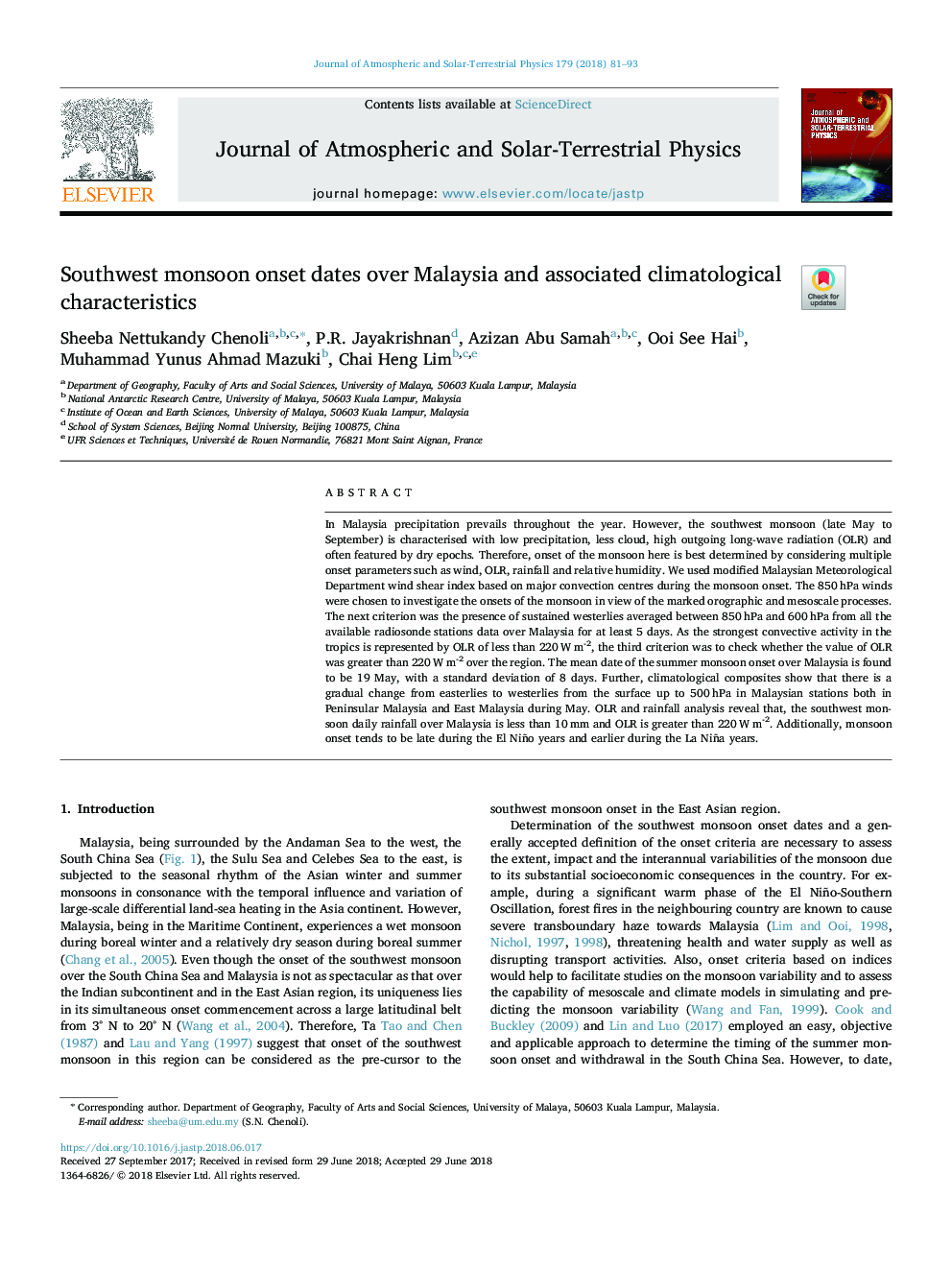| Article ID | Journal | Published Year | Pages | File Type |
|---|---|---|---|---|
| 8139029 | Journal of Atmospheric and Solar-Terrestrial Physics | 2018 | 13 Pages |
Abstract
In Malaysia precipitation prevails throughout the year. However, the southwest monsoon (late May to September) is characterised with low precipitation, less cloud, high outgoing long-wave radiation (OLR) and often featured by dry epochs. Therefore, onset of the monsoon here is best determined by considering multiple onset parameters such as wind, OLR, rainfall and relative humidity. We used modified Malaysian Meteorological Department wind shear index based on major convection centres during the monsoon onset. The 850â¯hPa winds were chosen to investigate the onsets of the monsoon in view of the marked orographic and mesoscale processes. The next criterion was the presence of sustained westerlies averaged between 850â¯hPa and 600â¯hPa from all the available radiosonde stations data over Malaysia for at least 5 days. As the strongest convective activity in the tropics is represented by OLR of less than 220â¯Wâ¯m-2, the third criterion was to check whether the value of OLR was greater than 220â¯Wâ¯m-2 over the region. The mean date of the summer monsoon onset over Malaysia is found to be 19 May, with a standard deviation of 8 days. Further, climatological composites show that there is a gradual change from easterlies to westerlies from the surface up to 500â¯hPa in Malaysian stations both in Peninsular Malaysia and East Malaysia during May. OLR and rainfall analysis reveal that, the southwest monsoon daily rainfall over Malaysia is less than 10â¯mm and OLR is greater than 220â¯Wâ¯m-2. Additionally, monsoon onset tends to be late during the El Niño years and earlier during the La Niña years.
Related Topics
Physical Sciences and Engineering
Earth and Planetary Sciences
Geophysics
Authors
Sheeba Nettukandy Chenoli, P.R. Jayakrishnan, Azizan Abu Samah, Ooi See Hai, Muhammad Yunus Ahmad Mazuki, Chai Heng Lim,
